A few years ago I downloaded speed dating data from experiments conducted by Raymond Fisman, et al. (2005), which represents about 8,000 dates by 551 people. On each date, people scored each other on attractiveness, intelligence, ambition, and some other things, along with a yes or a no to seeing the other person again on a regular date.
Fisman, et al. noted gender differences in mate selection, such as: “Women put greater weight on the intelligence and the race of partner, while men respond more to physical attractiveness.” And this: “Men do not value women’s intelligence or ambition when it exceeds their own.” Seemed like data worth checking out.
(Side note: Do people even speed date anymore?)
Three sections:
- How the speed dating worked
- What women and men want in a partner
- Dating up the social ladder
How the speed dating rounds worked
In case you’re unfamiliar with the speed dating process, here’s how it works. There are two groups. Typically one group is women and the other is men. The point of it all is to match every woman with every man for a short period of time so that by the end, every one has gotten a chance to quickly know each other. The assumption is that you can learn a lot about a person in a short period of time.
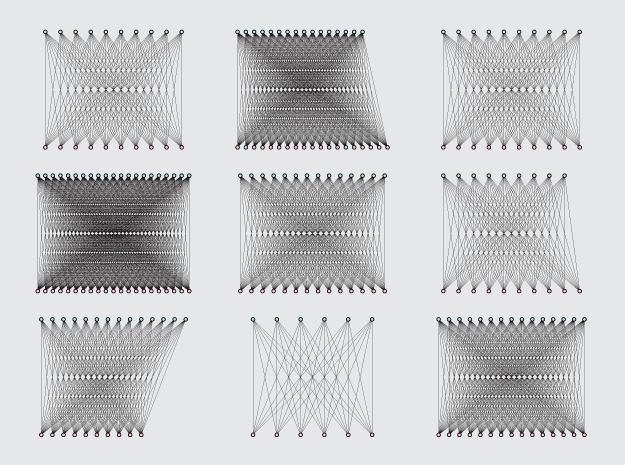
In these speed dating sessions, the women stayed seated, and the men shifted each round. The pairs chatted for four minutes and then the men shifted again.
People scored each other on a 1-to-10 scale and indicated whether or not s/he wanted to date the other. So a few things can happen:
- Man wants to date woman, but woman is not interested.
- Woman wants to date man, but man is not interested.
- Both are not interested.
- Both are interested, so information is exchanged.
This also presented interesting dating styles. I won’t go too in depth here, but it’s fun to take a quick look.
Some people said yes to almost everyone, casting a wide net, whereas others were more stingy with their yeses. Some got a lot of yeses but only returned the favor a couple of times. Some people were really likable and ended up with a lot of mutual yeses.
For example, here are the one-way connections for the first dating session:
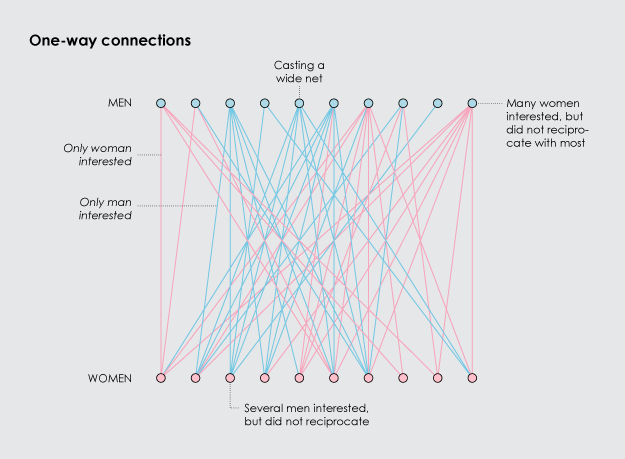
These are the mutual connections from the same session:
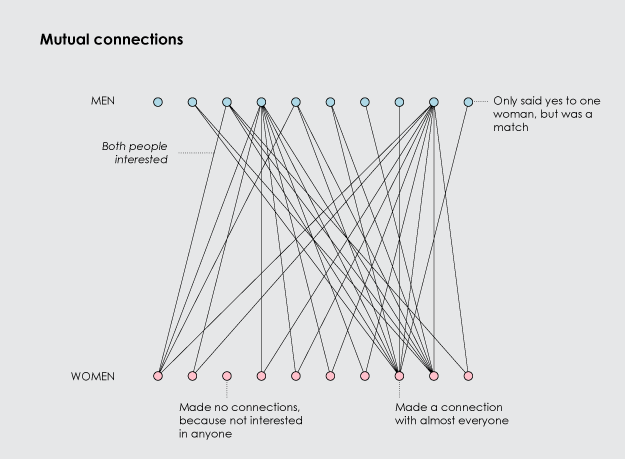
What women want vs. what men want
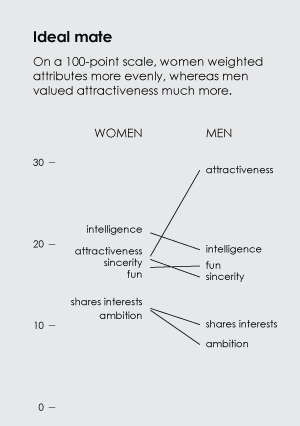 So what made one person more dateable than another? We can look at the pre-date surveys that asked others what they looked for in a partner and what they thought the opposite sex looked for. It was a 100-point scale, and participants were asked to divide those 100 points between attractiveness, intelligence, fun, sincerity, ambition, and shares the same interest.
So what made one person more dateable than another? We can look at the pre-date surveys that asked others what they looked for in a partner and what they thought the opposite sex looked for. It was a 100-point scale, and participants were asked to divide those 100 points between attractiveness, intelligence, fun, sincerity, ambition, and shares the same interest.
The chart on the right compares the medians of what women said they want and what men said they want.
Women weighted the attributes more evenly than the men did, with intelligence on top and ambition on the bottom. In contrast, men weighted attractiveness more heavily. Ambition was also weighted lowest by the men but a few points lower, which matches the results in the paper.
There’s nothing unexpected here. Although I thought sharing the same interest would be higher.
The contrast between what one group says it wants versus what the opposite thinks the other group wants is interesting. For example, women think men place attractiveness much higher in priority at the expense of intelligence and sincerity. And men think women actually weigh attractiveness more highly, also at the expense of intelligence and sincerity.
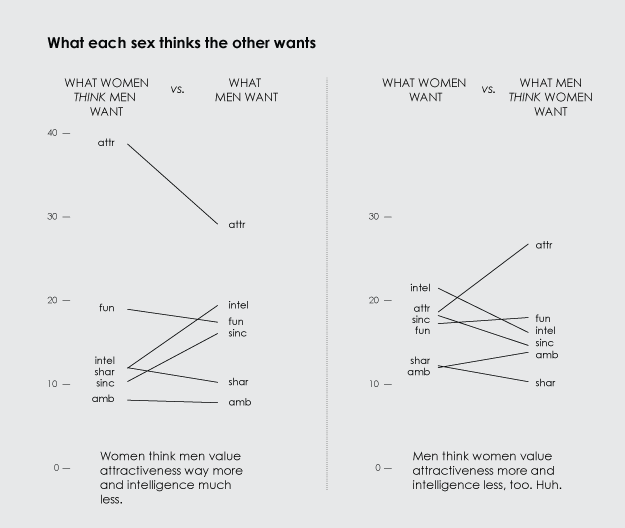
This is just what people said they wanted though. Is that what they actually wanted? As you might expect, the higher the ratings for all attributes, the higher the yes rate (the proportion of daters who said yes at the end of a round).
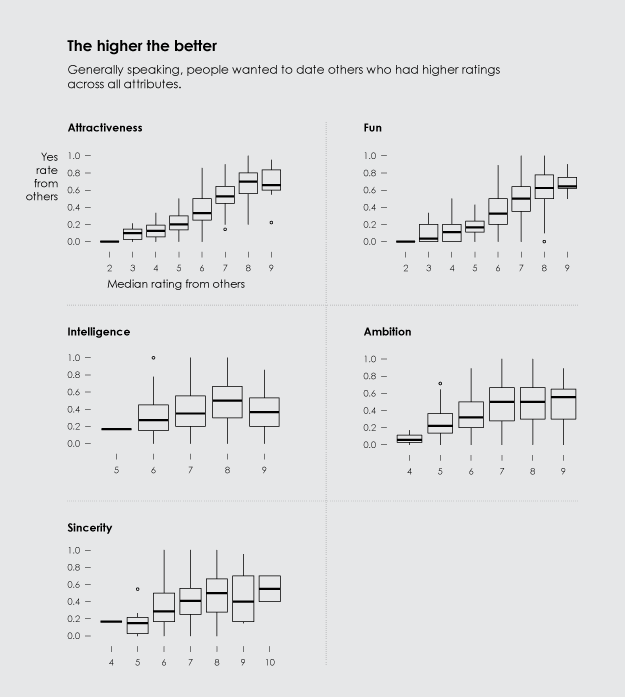
The trend is most clear with attractiveness and fun, which are easier to judge than the others in four minutes. The yes rates kind of level off for ambition and sincerity towards the higher ratings.
Look at intelligence though. There was a slight drop in yes rate when someone was rated with a 9 in intelligence by their peers. I suspect this was partially due to the relatively low number of people with this rating (only 26 of them), and the small group of high-intelligence people collectively had lower attractiveness ratings.
The trends are roughly the same when you split the results by gender. Although I would have expected women’s yes rates towards men to continue upward given women ranked intelligence higher than attractiveness. Instead, that’s how the men’s yes rates towards women look.
Dating up (and down) the social ladder
We see this in sitcoms and movies all the time. There’s a character who is less (traditionally) attractive interested in someone more attractive. His or her friend who is a genius in relationships launches into a speech about how said character has no chance because he or she can’t date up the social ladder. Some might say s/he is undateable.
How does this “rule” pan out?
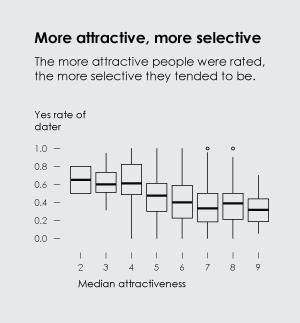 In the previous distributions, people got higher yes rates when they were rated more attractive by their partners. Flip this around. The more attractive someone was, the more selective they got. It’s like the dating pool decreased for an individual the more attractive s/he was.
In the previous distributions, people got higher yes rates when they were rated more attractive by their partners. Flip this around. The more attractive someone was, the more selective they got. It’s like the dating pool decreased for an individual the more attractive s/he was.
This doesn’t stop people from trying though.
We only really see the change in selectivity with attractiveness (and kind of with fun) when you look at the full distributions, but we see a little more when we compare dating up versus dating down. As shown below, for every attribute, the median yes rate was higher when daters scored their partners higher than themselves. For example, the yes rate was much higher given a dater thought the partner was more fun than her or him.
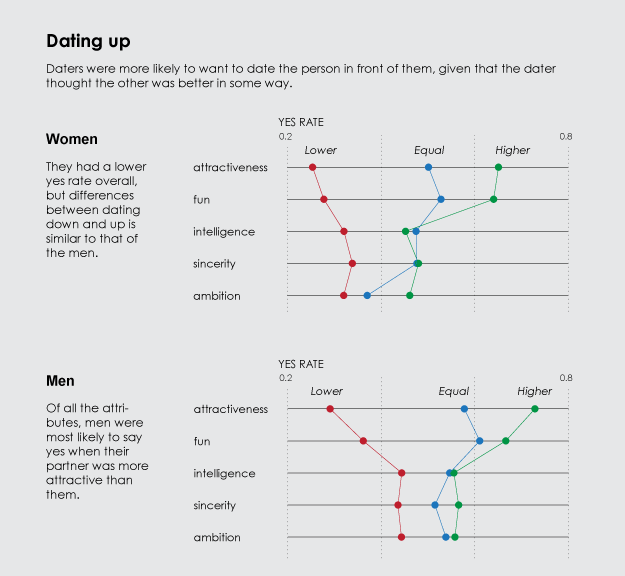
Again, the difference is most obvious with attractiveness and fun, which makes sense because those are easier to judge in four minutes. You can see the wider spread between the points. However, there’s still a spread for intelligence, sincerity, and ambition.
You can also see that the women were more selective than men. It’s hard to say from the data alone if this is because the women were actually more choosy, because the men were less desirable, or a little bit of both. I’m guessing it’s the women being more selective.
If we go back to the pre-date survey, the actual dating for men is similar to what they said was desirable in a partner. For women though, the speed date results are fairly different from their pre-survey responses. Again though, I suspect the difference comes from the challenge of judging a person in four minutes. Or not. If the former, speed dating seems better suited for men, and if the latter, well, I’m not sure what to do with that, so I’ll let the ladies weigh in.
Back to the original findings in the paper. It looks like women do put slightly more weight on intelligence than men, and men put slightly more weight on attractiveness. However, the chart above seems to go against the results that men don’t value women’s intelligence or ambition when it exceeds their own. If it didn’t matter, the yes rates for less ambitious and more ambitious would be near equal. I’ll have to dig a little more into the discrepancy, but I suspect we might see something closer to the results when you control for the other variables (mainly attractiveness).
In any case, it’s definitely not a straightforward decision.
Another way to look at it is that we don’t see any yes rates of zero in the chart above. At the end of the day, even if you are less attractive, less intelligent, less fun, and less ambitious, just remember: There’s still a chance.

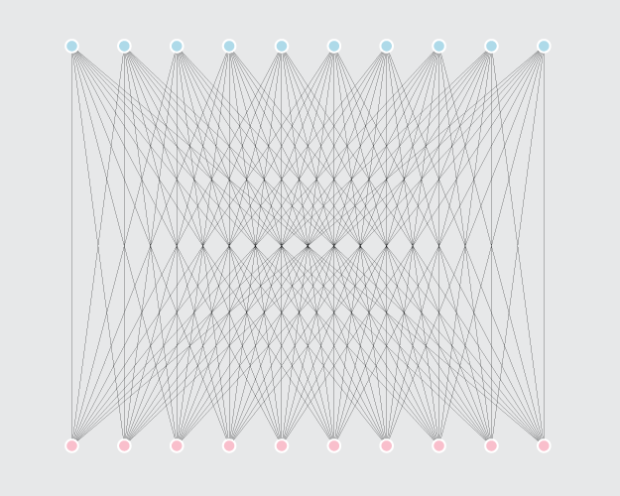
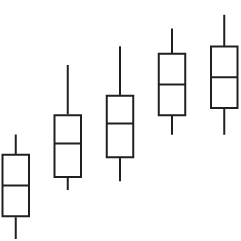


People might want to consider
inkel, E. J., & Eastwick, P. W. (2009). Arbitrary social norms influence sex differences in romantic selectivity. Psychological Science.
Where it’s found that the fundamental method used, of men rotating, biases responding.
Also, it’s interesting that in addition to this finding that women’s selections in the speed dating don’t match their prescreening it’s also true that women’s statements about sexual arousal to images and stories don’t match their statements about what makes them aroused.
Is this data publicly available somewhere?
This is awesome. It gives my gf and I something to talk about. I do have to say I do fall into the “thinking women want an attractive man and ambition high on the list” type of guy. Wow…I am wrong. My gf wants me to read books and I want her to go to the gym with me. Hmm makes sense!
I think I know why the women were more choosy. Dating is a prodding exercise and men respond usually in an exaggerated manner. It’s hard to choose the right guy from all that fluff.
At the end of the day, I think we’d do well not remember that the sample was taken from speed dating data, which has a number of easy enough biases that I doubt were controlled for.
Great post!
Small comment though: I found the last graph quite ambiguous because the labels (‘lower’, ‘equal’, ‘higher’) don’t match the line colors and are nearly centered around the bins (at least for the women analyses).
I think I know the solution here, the correlation between the vertical grid lines and the labels for the colours. If the vertical grid lines were gone it would be more immediately interpretable. Or, if they were positioned with respect to the labels such that the labels aren’t confused for some kind of bin then that would also work. Whatever happens that correlation in the figure needs to be broken.
I also found the choice of coloring / line elements to be odd in this visualization. I think if you flipped the X and Y axis, it would be more successful.
If ever I go speed dating now, this will ruin it for me – constantly thinking ‘well she’ll be the no-replier, he’s casting a wide net’. It does really want to make you put faces to data though.
Regardless, this is awesome (and I’ll probably write something about it soon, because awesomeness).
Fascinating!
Nathan– FYI– I forwarded this to a friend who writes on emotional honesty in dating (postmasculine.com). I’ll be interested to see a follow up from him.